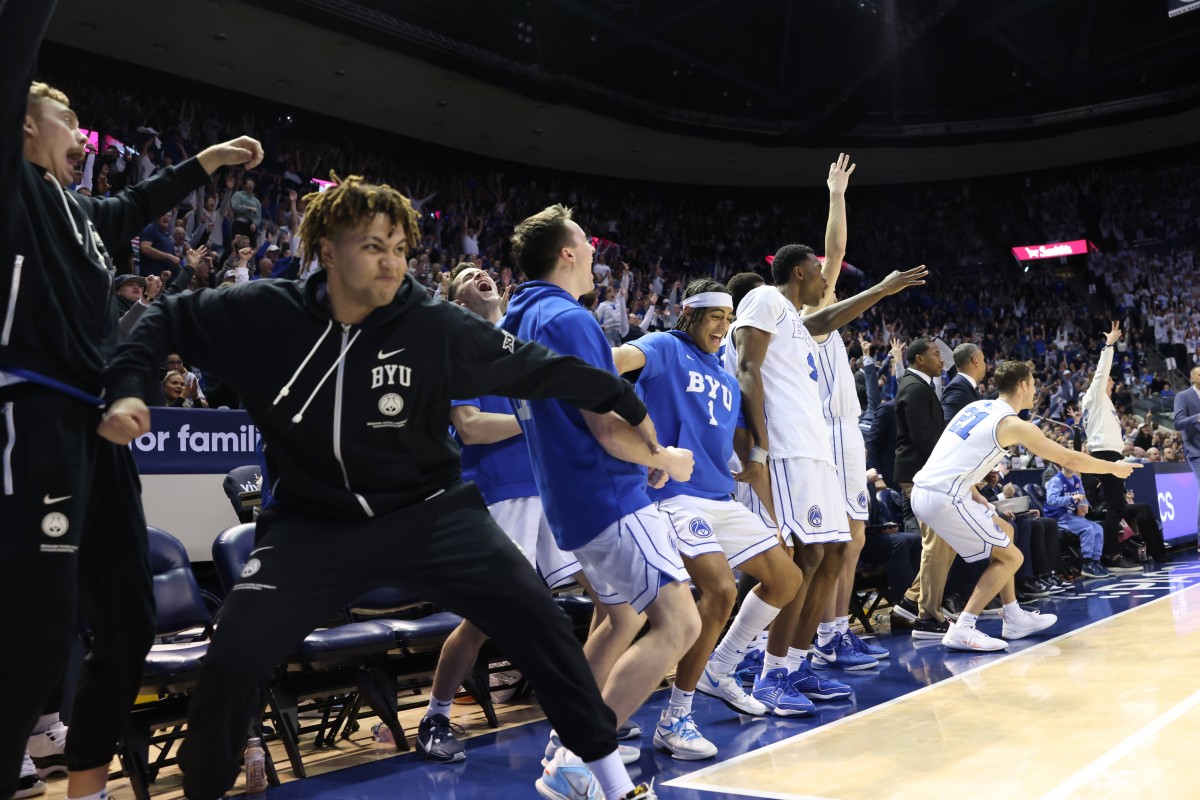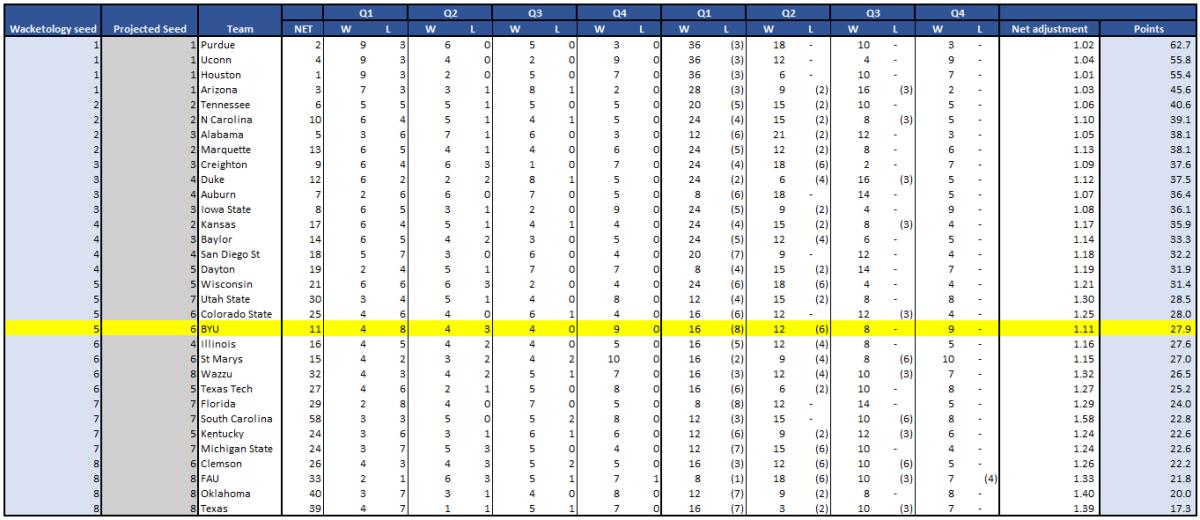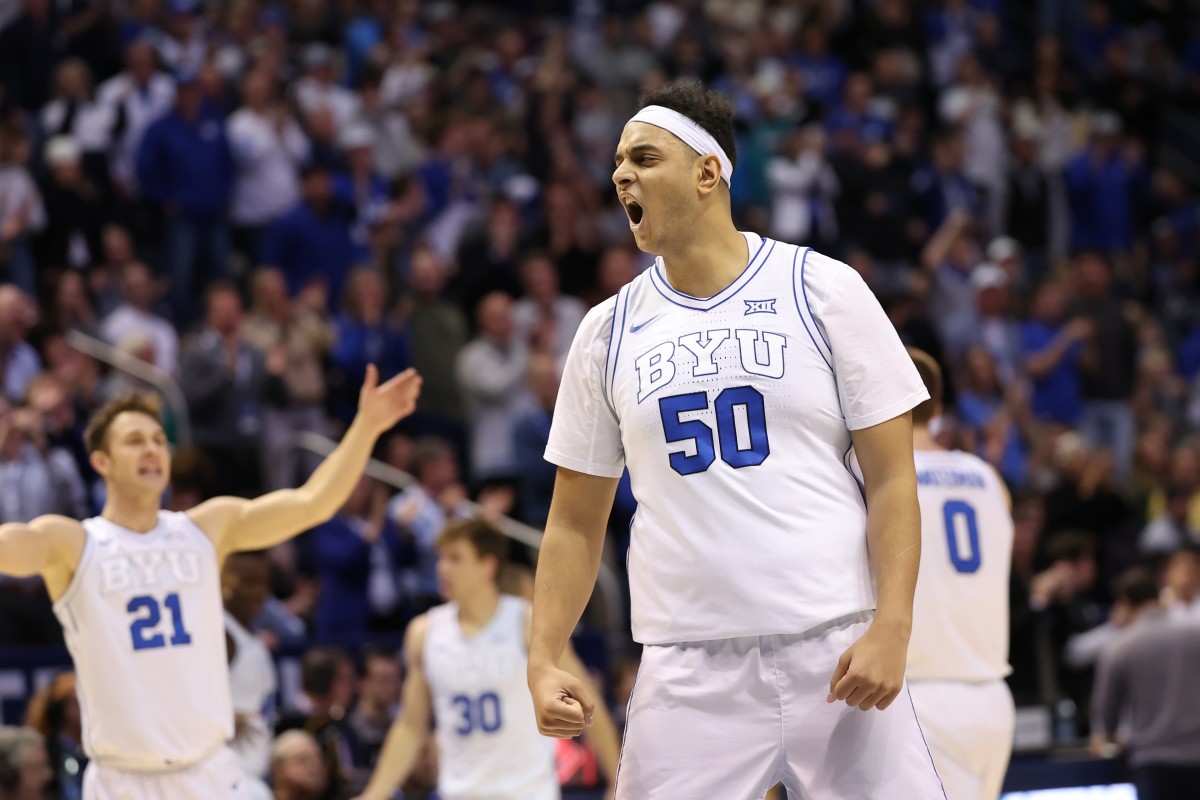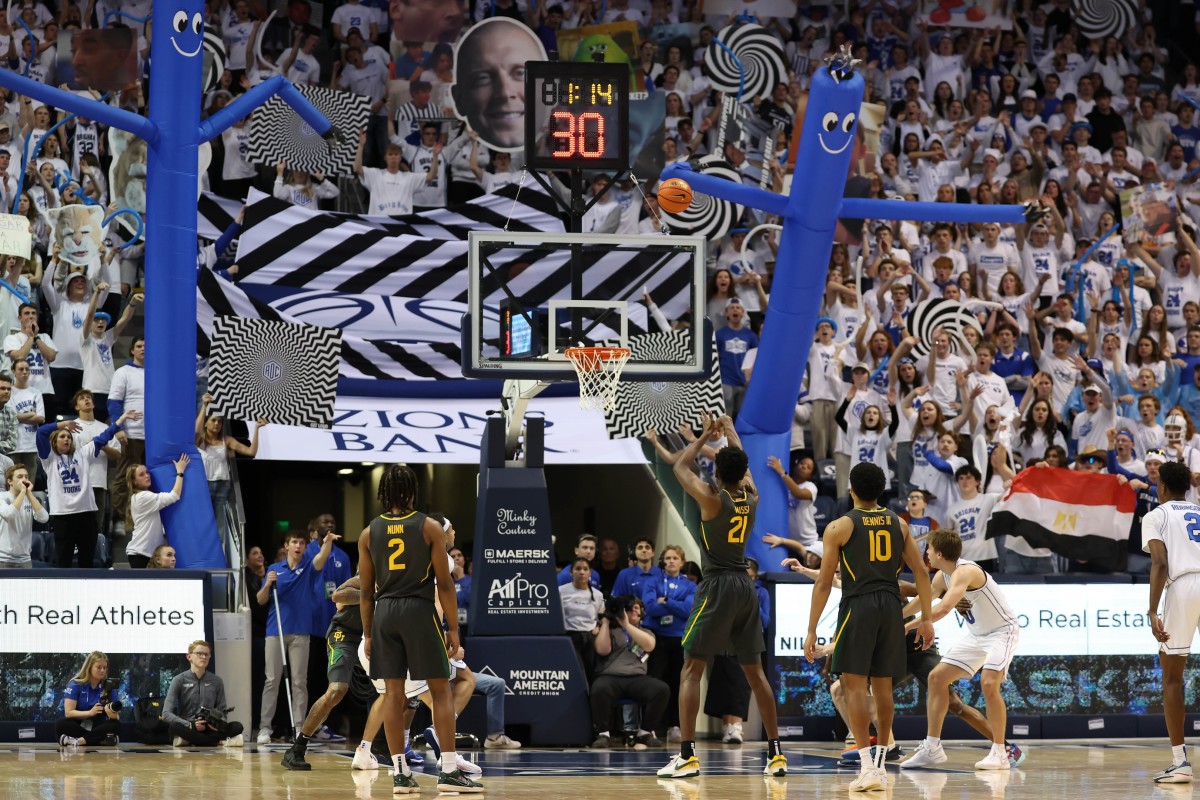Wacketology: Where does BYU basketball project in our NCAA tournament bracket?
Everyone’s got a bracket. ESPN, CBS, USA Today, NCAA.com. Everyone has some, so-called expert with their printouts and sharpies trying to predict the final field of 68 in March. We here at Cougs Daily, we don’t have Brackets. We have algorithms. Algorithms that are perfect, unbiased, and can predict the future.
Jokes aside, we don’t have that either. I will be the first to tell you I am not a bracketologist, but I do know numbers and I do know spreadsheets. I also know that the average BYU fan probably doesn’t have an in-depth understanding of the NCAA tournament selection process, and are left guessing how BYU’s resume stacks up against others projected to be seeded around them. That’s where we come in. I present to you, my algorithm: Wheat Bracketology, or “Wacketology” for short.

Overview
Wacketology is straightforward. It is a score based on each team’s NET rating (The NCAA’s primary metric) and the value of each teams wins and losses. This way we can somewhat project each program’s resume value relative to other teams projected near them. Each team gets a point value based on their wins and losses which is then adjusted based on their NET rating. Add those points up, sort, and you get an objective way of looking at the strength of a teams resume.
The NCAA committee separates wins and losses into four quadrants, and Wacketology gives each game a value based on that sorting system. Four points are awarded for a Quad 1 win, three for a Q2 win, two for a Q3 win, and 1 for a Q4 win. Conversely, teams subtract one point for a Q1 loss, two for a Quad 2, three for a Q3, and four for a Q4. That raw point total is divided by the teams NET adjustment to arrive at their Wacketology score. This score roughly predicts each teams resume value. Based on this rough algorithm, my seeding based on ESPN Bracketologist Joe Lunardi’s top 8 projected seeds looks something like this.

Obviously, there are some limitations to this method of seeding. It doesn’t consider any other metrics the committee uses such as KenPom, KPI or SOR. It also doesn’t account for qualitative factors such as player injuries or the College Football Playoff Committee’s favorite metrics: conference affiliation and vibes. It also likely puts too much stock in Q3 wins relative to Q1 wins, but it is a nice “back of the napkin” form of math to sort teams based on their resumes as defined by the NCAA’s primary sorting tool.
Where does BYU project?
Right now, I have BYU projected as the lowest 5-seed, narrowly behind Colorado State and Utah State. Lunardi has BYU projected ahead of these two teams, likely due to strength of schedule and BYU’s metrics, but BYU has a real shot of climbing higher along my 5 seed line if they can string together some wins.
Lunardi had BYU as a 6-seed in yesterday’s bracket update, but last nights results, coupled with BYU’s win over projected 3-seed Baylor, should help BYU climb. As you can tell from our Wacketology scores, there is very little separation between BYU and the surrounding schools. The gap between 4-seed San Diego State and 7-seed Florida is smaller than the gap between 1-seeds Houston and Arizona. Therefore, the margins between BYU climbing as high as a 5-seed and dropping as low as a 7-seed can be as little as one game.

What does BYU need to do the rest of the way to earn a 5-seed in March?
In short, BYU needs to win and get help. BYU got help last night with Lunardi projected 5-seeds Dayton and Kentucky dropping Q2 road games and Oklahoma State beating Cincinnati, which all but assures BYU’s loss in Stillwater stays out of Q3 territory. That’s the good news. The bad new is that BYU probably needs to finish out 4-1 the rest of the way to feel confident about seeing their logo on the 5 seed line on selection Sunday. Wins vs. Kansas State, Oklahoma State, TCU, and a split with ISU and Kansas would give BYU a Wacketology score of 37.8. Based on historical data from the last 3 NCAA tournaments, 5 seeds had a median Wacketology score of around 41.3, with a spread as high as 55.3 (SDSU in 2023), to as low as 28.6 (Colorado in 2021).
If BYU does that and wins a game in the Conference tournament, BYU lands at 40.5, which I feel will earn them a 5.5 seed. At a minimum, BYU needs one more Q1 win and no more than one Q2/3 loss. BYU currently sits at four Quad 1 wins and the average for historical 5-seeds is 5.5. The most likely scenario, according to projections, is that BYU finishes 3-2 with a win in the first round of the Big 12 tournament. If that happens, BYU will have a Wacketology score of 36.0, which puts them squarely on the bubble between a 5 and 6-seed.

Is BYU a lock to make the tournament?
Probably. If BYU lost every game the rest of the way, they would finish with a Wacketology score of 18.9. Historically, 11-seeds (typically the last group of at-large teams) have a median Wacketology score of 20.7, with a range from 36.5 (UCLA in 2021) down to 12.2 (Rutgers in 2022). As an aside, UCLA was a horrific draw for BYU in the first round in 2021. UCLA’s Wacketology score was higher than 2 five seeds that year and 6 points higher than BYU’s. Their “Cinderella” run to the final 4 was really just a case of horrific under seeding by the committee. But I digress.
BYU would still be firmly in the mix of that if they lost out. If BYU wins one more game, like vs Oklahoma State, BYU’s score jumps to a minimum of 23.4, which would safely put BYU in the field of 64. 2 more wins and BYU is likely looking at a 7-seed floor.
How much fun is this BYU team?
A lot. The last time beat 3 AP top 25 opponents in the same year, Jimmer Fredette was spreading Jimmermania across the United States. This is a special team, and for my money, the most surprisingly good team in BYU athletics history. We will hear BYU’s name called on selection Sunday, and with the right amount of luck, BYU has a legit chance of making the Sweet 16. This BYU team is good. REALLY good. And we should enjoy every second while we have it.
